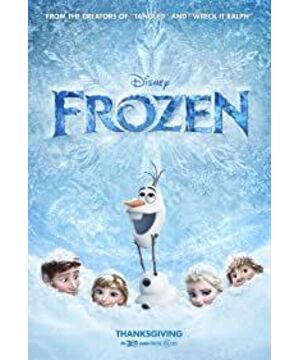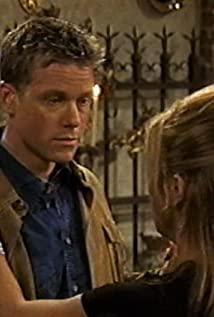Although on the surface it is Elsa's supernatural ability, the audience will definitely think of comrades and the feeling of "being proud to be yourself", which is fully demonstrated in let it go. The wonderful thing is that the duet between Anna and Hans and the song of Anna and Chris by the goblin (this is the theme song that must be equipped for the two male characters) contain sentences that can be regarded as written to Elsa, the former keeps appearing The door image (combined with the plot about door/gate between Anna and Elsa since childhood), the fear of pressure in the latter will make people choose wrong, isn't it all proof of Elsa? I also saw that Xuebao is the incarnation of Elsa, so I also said I love you, I also said that I love hugs in summer, "Some People are Worth Melting For" is even more profound, and you can even apply this sentence In the ice sculpture of Anna, isn't it Elsa that is worth melting? But at the same time, is Elsa's frozen heart worth melting for Anna?
The ambiguous beauty of the text is that it only provides the audience/readers with phenomena, and the right to interpret the text is in the hands of the viewer. Therefore, we often see drama fans intercepting every line and every scene, trying to analyze every sentence very thoroughly, in order to prove their point of view. The most interesting thing is to dig out the infinite sense of metaphor in every detail. I feel that the more I think about it, the more wonderful it is. I sorted these clues and saw the maps, and realized that it was like this! This in itself is an important source of pleasure from appreciation
Regarding the fun and danger of over-interpretation, Foucault's Pendulum gives very strong assumptions. The three people who knew they were in fiction, interpret the world wildly, made random connections, and they played a lot. They really aroused the follow-up of the believers, and finally took their lives to pay tribute to the nothingness. But to be honest, seeing their interpretation, readers who are not strong enough will believe it. At this time, they really need to study logic. The superficial connections are universal but not arbitrary, but as long as you grasp some common points, you can get enough brain supplements. It all depends on whether you are a bold person or not.
Since the text only provides the phenomenon and gives the viewer the right of interpretation, then the metaphors are endless and there is no standard answer. Every scene, every sentence, and every expression can be interpreted in multiple ways. This is the charm of the ambiguity of the text, because it turns the text into an infinite open space, making it enough to place many interpretations of metaphors. It also allows different kinds of viewers to find the meaning they need.
Rather than defending Frozen's sisterly affection or ambiguous lily, or even accusing the other party of being narrow-minded, it is better to lament that it is a good movie that can withstand so many interpretations. This is the beauty of it. Everyone blames Disney for deliberately hitting the side ball and failing to point out, so anxious to just think "Why don't you kiss?" Why do you have to kiss? The goblins only said that it takes an act of true love to understand the freezing magic, and then the two goblins give an example of a kiss of true love. The meaning is obvious. It doesn’t have to be kiss, as long as it’s an act of true love. Why can’t the sister Hug? Besides, it was useless for Chris to hold it for so long (so not exactly?). In fact, Anna didn't expect this at all before Xuebao named Chris. Her head was vaguely thought that Hans was, but after Hans became black, Xuebao points out the meaning of true love: "True love is to treat others more importantly than yourself." The act of Anna's death to save her sister has proved who is true love, and the one who really made the act of true love, besides Elsa, is also Anna herself!
This analysis can be extended to every detail and make endless assumptions (anyway, the screenwriter did not give an official explanation), was hugged countless times, and then my sister I love you, at the end I love skating, and my brain stops. The viewers who don’t come down have a detailed habit. I can’t wait to use every sentence to understand this proof question, and even more on the official interview, the surrounding picture album scripts, and then many fan pictures that excite me ( There is no shortage of Xiaohuang pictures and texts), trying to prove that sisters and sisters are true love. Why is it not true love? My sister is so afraid that her sister will be hurt so she can hide her forever. My sister chooses the latter between her and her sister's lives. The focus of the debate is only whether there is a physical desire for this love, whether there is a desire to rush and be rushed. . Whoops, hey, the brain hole is too big.
The movie smiled cunningly (or always pure): "I will only show you here. As for the story behind the black screen, it's possible to develop it entirely by your interpretation logic!" The
viewers are also cunning (or say Always smiled innocently: "Of course I know what values Disney wants to show: the restoration of family love, the courage to face oneself, the independence of women, the growth of learning, etc., this movie shows it perfectly."
So Why is Disney not clear? It is so distinctive and consistent with its own values. Now that Disney has done what it needs to express, what deeper metaphors these plots may contain, let the audience give the right of interpretation.
Disney stops at what it needs to stop, but it arouses viewers' interest "more than that" through the plot.
——A netizen on Twitter written by FROZEN asked her:
"We want to know if Elsa is gay, and if Let It Go is an out-of-the-box song?"
She responded,
"I think it's better not to explain it. :-)」(Think this is best left unsaid :-))
——Even if Elsa’s situation is infinitely close to the gay metaphor (combined with the ongoing legalization of gay marriage in the United States?), it is still very different from taking it to reality, because the latter will have only one explanation, and the former can be derived Out more. When the viewer scratches his head and feels why he did not give a definite answer, he might as well turn back and think, because there is no definite answer that makes it possible to include more meaning. Why not open up to a broader meaning? Besides, there are so many beautiful things in the world that you can admire?
"Lily" is a word that describes the state of "a strong sense of connection between women" to distinguish les who have a clear physical desire. It is a state and not a rule. Believe that Lily is the creator's "presupposition" in the text, only to be discovered and interpreted by the viewer, everyone thinks that they have the right tools, so controversy arose. Baihe is dominated by the viewer rather than the creator. It is used when describing the obscurity that the viewer feels when they see the "naturally connected relationship" between two women in the text. It can only suggest that it cannot be stated explicitly, and the scope of the suggestion is beyond the control of the creator. The creator can illuminate what he wants to illuminate, but he cannot grasp what hints the viewer may interpret from the shadows. The right to interpret is in the hands of the viewer, how can others replace their own feelings? One person feels the obscure pleasure, which constructs a set of "lily" logic, while the other person sees the same content but is indifferent. Since people are fundamentally different from each other, there are differences in empathy, and even if the details are exhausted and persuaded in words, it is the work of the creator.
Who said family affection and lily are incompatible? Or is the boundary between them already blurred? Besides, what is lily? I think Lily refers to the strong sense of attachment and connection between women. If two same-sex characters can give the audience a strong sense of "natural connection", that is, their behavior, emotion, and way of thinking can only be It only appears when it involves the other party, and does not explicitly involve the body desire (even if the details of the episode show its possible direction in every sentence). The ambiguous beauty of Lily lies in that it provides viewers with unlimited imagination, allowing them to extend the freedom of interpretation to infinity. Where does this infinity end? Stop wherever you can stop.
View more about Frozen reviews











